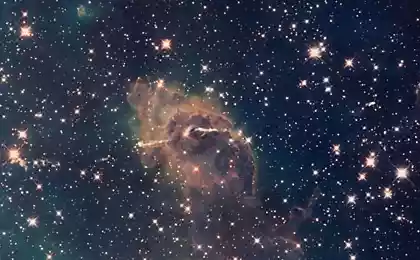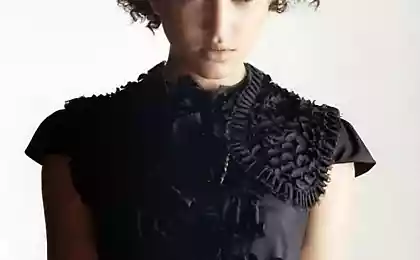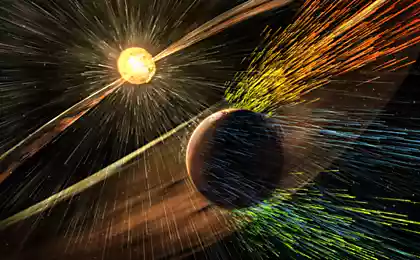1093
Top 10 most spectacular extraterrestrial Storm and Storm
Many people talk about the ferocious and extreme weather, which walks on the surface of our planet's modest, and they are certainly right: it can be very destructive and impressive. However, our so-called storm paled in comparison to the catastrophic cyclone that break through the dense atmosphere of gas giants, or wander across the surface of Mars.
Thanks to advanced satellite imagery and grand tour of our solar system, astronomers were able to observe and study the ferocious hurricanes, born in swirling atmospheres make breathtaking images and expand our knowledge of these incredible worlds.
Pink storm Saturna
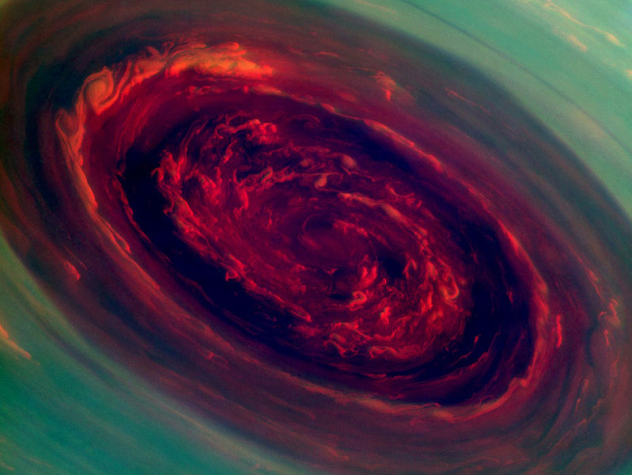
This exciting picture - a vortex at the north pole of Saturn. Trapped hexagonal cloud formation and showing eye, stretching 2,000 kilometers, this chic hurricane winds accelerates to 540 kilometers per hour.
The picture above was taken during the mission "Cassini" in 2013, after the satellite remained in orbit the gas giant for several years, and is one of the many other great photo very successful mission.
Giant dark spots Neptuna
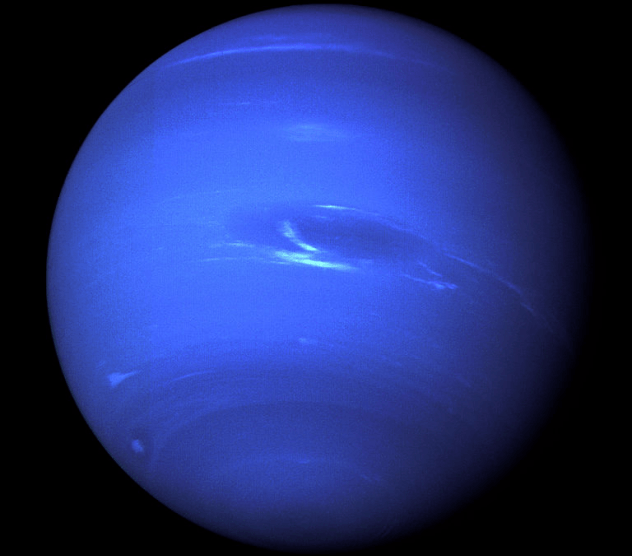
As a teenager, on the surface of Neptune accidentally poured the Great Dark Spot (GDS). First GDS watched space probe "Voyager 2" in 1989, it was the size of Earth cyclone raging in the southern hemisphere of Neptune with winds carrying at 2400 kilometers per hour. It is the fastest winds in the solar system seen to date.
Unlike other extraterrestrial storms, large dark stains are not permanent as noted by Hubble in 1994, when he tried to find a spot, noticed "Voyager 2". However, not all was lost, and Hubble found the separate GDS Neptune. But this time in the northern hemisphere.
These storms were somewhat puzzling scientists because traveling in the opposite direction along the axis of motion of Neptune. Like other cyclones, these "spots" caused by large temperature gradients in the atmospheres of the planets, but ridiculously high speed winds on Neptune have yet to explain.
Dragon Storm Saturna
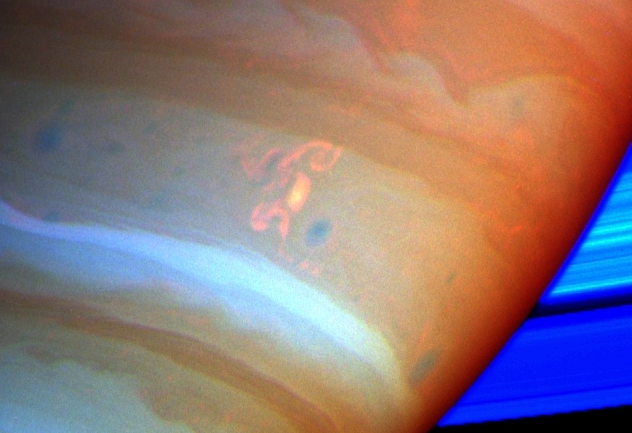
Located in the southern hemisphere, in the depths of the Avenue of the Storm (the coolest of all the alleys, apparently), Dragon is a devastating storm. Photographed mission "Cassini" in 2004, this incredible storm stretches more than 3,200 kilometers and provides lightning 1,000 times stronger than those on Earth. These zippers are not observed directly, but recorded by a powerful radio signals.
Along with breathtaking pictures "Cassini" and watched a few dark spots, emerges in the Valley of Storms, when the storm raged Dragon. These spots are passed over the surface of Saturn, or blending, or scattered in the atmosphere. This, in turn, suggests that powerful storms fed powerful atmospheric features found at the gas giants, generating extraordinary course and the incredible landscape of the cloud, which we can admire today.
Mysterious eyes Saturna
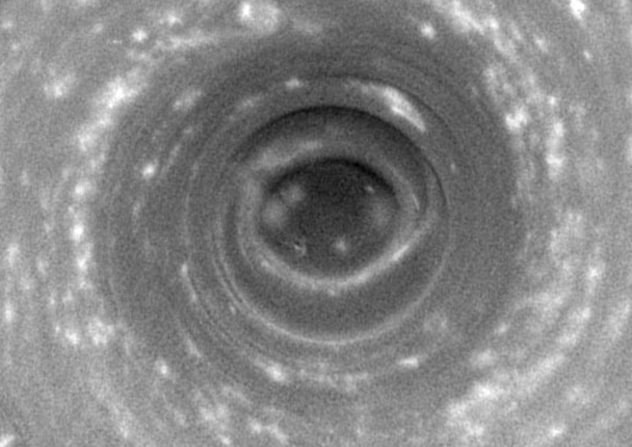
Occupying a two-thirds the diameter of Earth and hovering 32 kilometers above the south pole of Saturn, this huge vortex has an uncanny resemblance to a dark, mysterious eyes. While this storm might look like just a hurricane, just a big, his behavior is very different from the behavior of the hurricane.
Scientists know that on Earth hurricanes drift across the ocean, but on Saturn this particular storm is stationary and closed around the south pole. In addition, Saturn has no oceans.
In addition to its absolute delights, this storm has also given astronomers more clues about what lies beneath the clouds of Saturn. How on earth, the eye of the storm has no clouds, allowing a glimpse into the visual and infrared spectrum twice as deep. Because of this, the infrared images Keck telescope on Mauna Kea in Hawaii, revealed a strange warmth of the south pole of Saturn. "Cassini" flew over the eye of the storm and was able to confirm a small but significant increase in temperature of 2 degrees Celsius. Dr. Richard Akterberg from NASA explains this increase in temperature so that the "winds down, the atmosphere is compressed and heated over the South Pole».
"Cassini" will remain on the south pole of Saturn, watching this storm and its reaction to the change of seasons on a beautiful planet with rings.
Invincible Venusian double vortex The storm over the South Pole of Venus four times larger than any that had ever seen in the world, and reaches a height of 20 kilometers. (That's twice as Mount Everest). If you imagine that you would become indestructible and could stand in the clouds at the south pole of Venus, you would not feel no rain, no wind of the storm. This is because the cyclone is located at an altitude of 42 kilometers above the planet's surface, and the incredible heat of the Venus rain reaches a height of only 35 kilometers, and then evaporates. So instead of getting wet in this terrible cyclone, you will only see the clouds over his head.
Rare Martian spiral shtormy
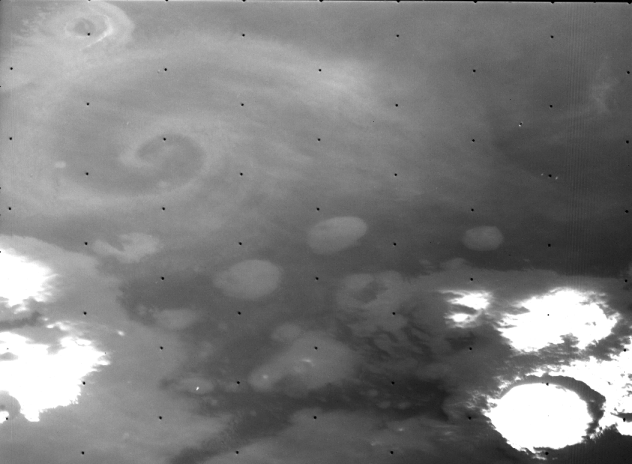
In 1999, over the Martian polar caps have seen a huge storm. Although the storm was four times the whole area, it lasted only one Earth day. Storms such as this are rare on Mars, but caught on camera before, in 1978 captured "Viking I», although they were not so big, what Hubble saw.
Storm, discovered by Hubble, comprises at least three bands of clouds swirling counter-clockwise spiral structure and sleek eye of a storm the size of Lake Baikal. Both the observed storm on Mars took place in the middle of the summer season in the northern hemisphere of Mars. This is an important time for Mars, since the seasonal polar cap of carbon dioxide completely sublimates (evaporates), leaving a net under the ice.
Mysterious storm Titana
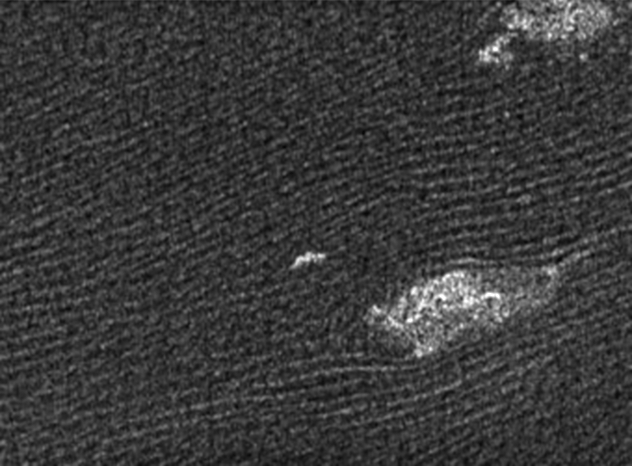
Titan - the largest moon of Saturn, and in terms of the weather is one of the most intriguing in our solar system. With a dense atmosphere, consisting almost entirely of nitrogen with a small amount of methane, it is almost exactly like the Earth, if we ignore the fact that on the surface of Titan is impossible to breathe. Titanium coated with methane rivers and lakes, surrounded by majestic mountains and sand dunes. It is these dunes are a puzzle to astronomers.
Simulation of the winds on Titan's surface show that the dunes of Titan should point to the west, but they point to the east. Some suggest that the intense gravitational tides of Saturn's winds are turning back the clock, but it still does not explain why the dunes look to the east.
Perhaps during a violent methane storms in the upper atmosphere of Titan, the winds are blowing eastward. It is the predominant easterly direction to the overall picture of the winds, thereby determining the direction of the dunes. Further evidence of this was found in the sand: the decomposition of methane in the upper atmosphere formed a strange black. So, the storm was so intense that shed a rain of soot on the ground. On Titan, the phrase "raining cats and dogs" to a new level.
Oval BA, Small Red Spot Yupitera
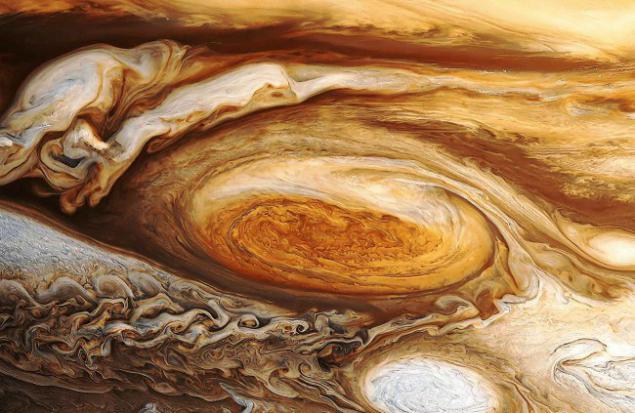
Everyone knows the Great Red Spot of Jupiter, but what we know about the junior Red Spot? Who even knows about this formation, astronomers discovered in 2000? For several years, three small white spots that have been there for decades, slowly merged into two spots, and then at one, forming a giant storm, though not as big as the BCP.
After a few years younger than white spot beginning to change color. Within a month, it has become white (in November 2005) to brown (December 2005). A few months later it acquired the well-known brick-red hue. Although it is not known exactly how these spots change color, the astronomers suggest that the storm simply drag the material from the cloud layers below them into the air higher up, where he interacts with the solar ultraviolet radiation, and exposed to some chemical reaction, which produces a visible us the color .
Although the discoloration of white spots of Jupiter has been seen before, none of them did not last as long as Oval BA, which is held for 300 years. That is why we are not only witnessing the incredible education Little Red Spot of Jupiter, but also look forward to a change of color and long-lasting growth, which will result in one Great Red Spot.
Charming hexagon Saturna
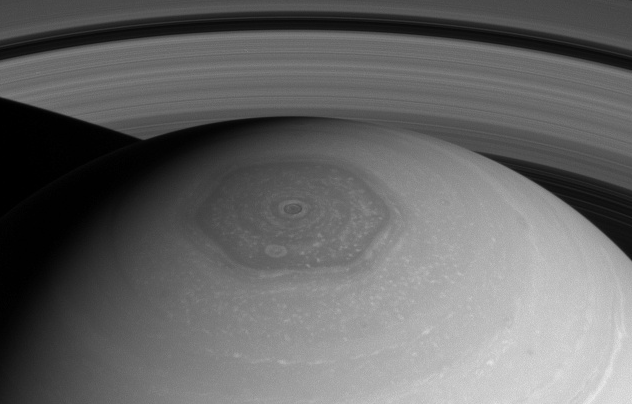
Perhaps the most stunning and mysterious vortex in the Solar System, Saturn's hexagon, will always cause awe in those who observe his greatness. Big enough to swallow four Earth, and rotates once in 10 hours, this incredible storm and its strange shape need explanation.
Fortunately, science has an answer to this question; also managed to recreate this phenomenon in the lab hex. How I formed this amazing storm? It is in the sweet spot in the atmosphere of Saturn, which appears a huge difference in the speed of atmospheric winds. Hexagon Saturn formed in the region of turbulent flow, which is stuck between two rotating bodies of wind, both of which revolve around the planet at different speeds. The vortex over the north pole of Saturn (and the inside of the hexagon) rotates at a speed different from the one with which the rotating winds outside the hexagon forming this incredible storm.
Given that the hexagon was observed in the 1980s and later checked the existence in 2006, it is reasonable to assume that he had been there for hundreds of years.
Dust Devils of Mars The small, safe and friendly little brothers tornadoes, dust devils are common in desert regions of our planet - and they also discovered on Mars. And if you think about it, this makes sense. Eventually, dust devils are formed in hot, dry and calm environment where a small area of land heats up faster than the environment, which makes an ideal candidate for Mars dust storms.
These Martian dust devils are 10 times higher than their terrestrial counterparts, and some 50 times greater, that is, may be a threat to expensive probes and rovers that we constantly send to the Red Planet. And thanks to pure luck, the dust devils do more good than harm. In 2005, dust devil blew an impressive amount of dust and debris from the solar panels rover "Spirit", allowing him to continue working.
Scooter Neptuna
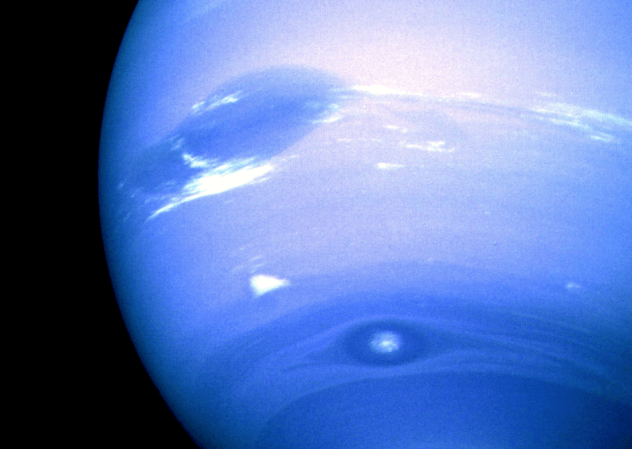
Flying over the surface of Neptune speed 1900 kilometers per hour, the storm pattern was perfect name Scooter, since flies circle the planet in less than 16 hours. If we remember that Neptune is four times the size of Earth, the speed is impressive. As mentioned above the Great Dark Spot, "Scooter" was observed during missions "Voyager" in 1989 and then did the same gorgeous pictures. The photo shows three separate shots: the Great Dark Spot, Dark Spot 2 and Scooter. Astronomers were lucky to make this picture, because all three features are flying around the planet at different speeds.
Origin and speed scooter remains a mystery, although astronomers suggest that the storm could grow loop from the lower atmosphere.
New Social Advertising disclose painful truth
Longevity Project - Now I'll always be Massaging feet!










